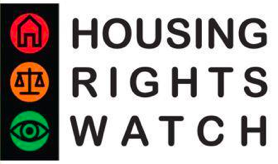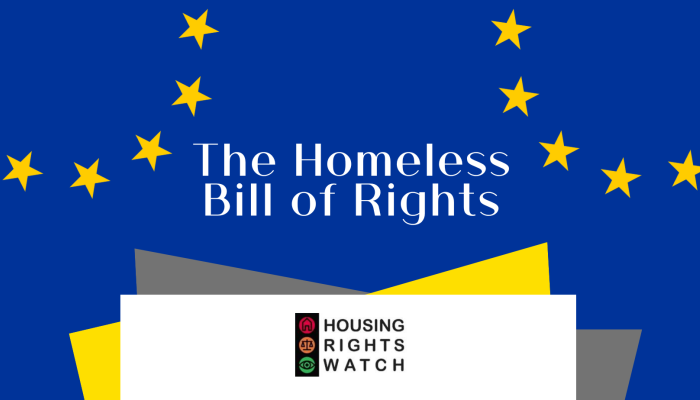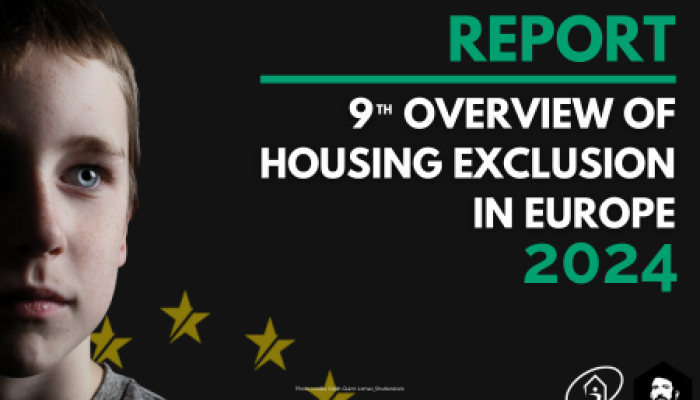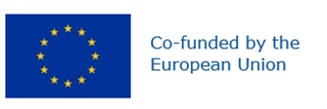Over the years there has been a shift in focus from the medical model of disability that used to focus on an individual’s impairments to the social model of disability, which includes an understanding of systemic barriers, negative attitudes and exclusion by society that persons with disabilities encounter. According to this model, it is society that is the contributory factor in disabling people.
With the entering into force of the United Nations Convention on the Rights of Persons with Disabilities (UNCPRD)[1], it is now established that disability is a human right issue. A human rights-based approach to disability implies that all people are active subjects with legal claims and that persons with disabilities need to participate in all spheres of society on an equal basis with their non-disabled peers.
The UNCRPD further elaborates the meaning of the right to adequate housing of persons with disabilities and it creates a new benchmark for the realisation of their right to adequate housing through Article 28 on Adequate standard of living and social protection[2].
Persons with disabilities are extremely diverse and experience discrimination and challenges that vary depending on the context. Each person with an impairment has a varying degree of support needs, from none to complex and multi-layered needs, that should be in place to facilitate the enjoyment of the right to adequate housing for all.
Homelessness is conceived as a process that affects many persons at different points in their lives. The European Typology on Homelessness and Housing Exclusion[3] (ETHOS) begins with the conceptual understanding that there are three domains which constitute a “home”, the absence of which can be taken to delineate homelessness. Persons with disabilities might find themselves in all ETHOS categories which amount to forms of homelessness across Europe.
While the research and data may be limited, it is clear there are substantial overlaps between those with long term health conditions and disabilities and those who experience or are at risk of homelessness and some key concerns can be pointed out:
- Persons with disabilities are at an increased risk of becoming homeless and socially excluded due to the prevalence of institutionalisation, discrimination in access to services, inadequate housing and social supports, a lack of accessible and affordable housing stock and unaffordable rents.
- Entries into homelessness are often a result of a complex interplay between structural, institutional, societal and personal factors. Research has established clear links between homelessness and the experience of living in institutions. Ensuring that the closure of institutions is accompanied by the provision of quality community-based services, including accessible and affordable housing options, is key to preventing homelessness of those individuals moving from institutions into the community.
- Stigma and discrimination have been identified as two major factors leading to the homelessness of persons with disabilities, especially when it comes to persons with psychosocial disabilities. Stigma and discrimination create a barrier for housing and for accessing other social services. A third factor is the lack of community-based services and/or lack of access to hospital-based care.
- In addition to this, there is a need to raise society’s awareness of disability and homelessness to foster greater knowledge among persons with disabilities of their rights and how to exercise them.
In recent years a number of key international human rights documents and reports have begun a synthesis of approaches in the two sectors. Particularly relevant is the Report of the UN Special Rapporteur on the right to adequate housing in 2017 to which FEANTSA jointly contributed with the European Disabilities Forum. The Special Rapporteur examines the right to housing of persons with disabilities[4]. The Special Rapporteur provides an overview of their diverse housing circumstances — from institutionalisation, homelessness and grossly inadequate housing to experiences of stigmatisation and exclusion — linked to a broad range of impairments.
The Report of the Special Rapporteur considers that the “disability human rights paradigm” has the potential to influence ‘the right to adequate housing’. In the conclusions, the report makes the link between homeless and disabilities, which can be seen in paragraph 20: Homelessness disproportionately affects persons with disabilities. In a vicious circle, disability often leads to homelessness and homelessness, in turn, creates or exacerbates impairments and additional barriers
The report highlights the fundamental principles of a human rights-based approach to disability, such as: dignity, substantive equality, accessibility and participation, as well as the obligation to realise the right to housing to the maximum of available resources and correlates them to the key features of the right to adequate housing. Furthermore, the Rapporteur reflects on how the right to housing can be more effectively claimed by persons with disabilities and adjudicated by courts and tribunals and reviews some effective policy and legislative initiatives that are necessary to implement that right. In Europe, for example, the report mentions Finland’s approach as a good practice framework for advancing the right to housing for persons with disabilities.
Ms. Farha concludes her report with key recommendations, just to mention the most relevant ones, we can mention the need for states to:
- Prioritize and recognize in domestic law the obligation to realize the right to housing of persons with disabilities to the maximum of available resources
- Ensure that non-discrimination provisions are based on substantive equality, recognizing positive obligations to address the systemic inequality in housing;
- Ensure that all persons with disabilities can live free from institutionalization and that access to adequate housing, the requisite services and appropriately trained support is provided;
- Ensure access to justice and effective accountability mechanisms for claims to the right to adequate housing;
- Adopt a clear policy framework for the inclusion of all persons with disabilities in all areas of housing policy and design;
- Design and implement both qualitative and quantitative data collection about the housing circumstances of persons with disabilities:
- Address homelessness among persons with disabilities on an urgent basis and prioritize measures to address the circumstances of those living in informal settlements and homeless encampments;
General Comment 5
Article 19 of the CRPD established obligations for states parties to fulfil the right to persons with disabilities to live independently and being included in the community.
Article 19 – Living independently and being included in the community
States Parties to the present Convention recognize the equal right of all persons with disabilities to live in the community, with choices equal to others, and shall take effective and appropriate measures to facilitate full enjoyment by persons with disabilities of this right and their full inclusion and participation in the community, including by ensuring that:
a) Persons with disabilities have the opportunity to choose their place of residence and where and with whom they live on an equal basis with others and are not obliged to live in a particular living arrangement;
b) Persons with disabilities have access to a range of in-home, residential and other community support services, including personal assistance necessary to support living and inclusion in the community, and to prevent isolation or segregation from the community;
c) Community services and facilities for the general population are available on an equal basis to persons with disabilities and are responsive to their needs.
General Comment 5 on article 19 of the United Nations Convention on the Rights of Persons with Disabilities[5] approved in 2017 aims at assisting States parties in fulfilling their obligations under this article. The final version has taken up the main demands and concerns of civil society actors and institutions are no longer presented as a viable alternative to community-based care. People with complex support needs, like homeless people, have the right to live outside institutions. Therefore, clear and targeted strategies for de-institutionalisation need to be developed.
Children have the right to grow up in their families. Therefore, families need to be provided with information, guidance and support. This includes financial assistance. However, families should not be the only option to fall back upon for people with disabilities who live independently. Formal support must be available to them and states must develop concrete action plans to ensure this.
Persons with disabilities and the European Union
The ratification of the United Nations Convention on the Rights of Persons with Disabilities (UNCRPD) by the European Union was a landmark for disability rights. The EU and 27 of its Member States have committed themselves to achieving independent living for persons with disabilities.
The European Disability Strategy 2010-2020 is the main instrument to support the EU's implementation of the UN Convention on the Rights of Persons with Disabilities (UNCRPD).
In November 2017 a resolution by the European Parliament was passed on the implementation of the European Disability Strategy[6] urging Member States to ensure that de-institutionalisation never leads to homelessness for persons with disabilities because of a lack of adequate and/or accessible housing for delivering care in the community and urged the Commission and the Member States to take additional measures to reach out to the most vulnerable, such as homeless persons with disabilities.
An opinion by the European Economic and Social Committee (2016)[7] included a recommendation to the European Union to “develop a human rights-based indicators system in cooperation with persons with disabilities and their representative organizations.”
The EU has designated a framework for matters of EU competence that complements national monitoring frameworks, which are responsible for promoting, protecting and monitoring the CRPD in EU Member States. The Fundamental Rights Agency (FRA) is a member of this framework together with the European Parliament, European Ombudsman and the European Disability Forum (EDF). We must not forget that Article 26 of the EU Charter of Fundamental Rights includes Integration of persons with disabilities: The Union recognises and respects the right of persons with disabilities to benefit from measures designed to ensure their independence, social and occupational integration and participation in the life of the community.
Recent reports from the FRA, as the EU’s independent body for delivering fundamental rights assistance and expertise to the EU and its Member States, reveal the need for systematic changes in the way support for people with disabilities is organised and funded in the EU. They have looked at deinstitutionalisation plans and commitments. They have also looked at funding and the impact this is having on people with disabilities[8]. The agency is also working on a project on the transition from institutional care to community-based support for persons with disabilities and as part of this they are developing human rights indicators to enable the assessment of the fulfilment of Article 19 of the CRPD[9], the right to independent living. They look at different levels: structural, process and outcomes. The structure captures the more institutional aspects of fundamental rights commitments (legislation and policies in place, existence of mechanisms, resources); the process looks at initiatives taken to meet these commitments, such as policy measures applied, efficiency and reach of mechanisms; finally, outcome analyses the situation on the ground, such as actual awareness of rights.
HOW DO THESE RECENT HUMAN RIGHTS DEVELOPMENTS IMPACT POLICY AND PRACTICE?
In November 2017 organisations working with the homeless and experts on disabilities met in Galway (Ireland) and these recent human rights developments were presented[10].
We observed during the meeting parallel tracks in dialogue: on the one hand, access to housing (affordability issues, etc.) and on the other hand de-institutionalisation (community-based living as a real ‘home’ embedded in the community and provision of adapted services).
The actors on the ground confirmed the close link between disabilities and homelessness but at the same time, they agreed that the two sectors do not normally work together. This may be explained partly by the responsibilities of the different local departments: often totally separated services at local level address the needs of disabled people and homeless people.
The reinforced protection of rights of disabled people at European and International level has not yet resulted in improved policies and practices in Ireland. Social actors present at the meeting felt there was a need for systematic changes in the way support for people with disabilities is carried out away from institutions, more community-based services should be put in place. The lack of resources and services that could help develop this is worrisome.
A report by Inclusion Ireland on deinstitutionalisation in this country[11] concluded that the State policy had failed to accomplish the transition to community-based services. Although living in the community has proved to be better for people with disabilities, institutions continue to be the main solution. According to this report, many people in Ireland do not think that people with disabilities are ready to live in the community and there hasn’t been enough funding put in place for this purpose.
Homeless service providers denounced that there were still substantial accessibility barriers in traditional homeless services: emergency and temporary accommodation are very often not adapted for people with (physical) disabilities. A focus on housing-led solutions to addressing homelessness is needed.
There was a short discussion on how to use the Housing First approach to make it happen, especially for homeless people with complex needs. Once again, the lack of adequate housing was signalled as the main obstacle to achieve this.
The recent research in Europe shows that the Housing First approach may be a good avenue for people with high support needs[12]. In fact, the principles of the Housing First approach have a close connection with the disability paradigm, in particular those linked to individual choice and control, person-centred planning and flexible open-ended support including integration in the community. The experts agreed that a lot of work still had to be done in translating the model of independent living into homelessness practice.
The EU and the Member States have an important role to actively promote the inclusion of homeless people with disabilities, in line with the reinforced protection of rights of disabled people at European and International level. The EU must support Member States to reflect these obligations in policy and practice through funding, monitoring mechanisms, etc.
[1] United Nations Convention on the Rights of Persons with Disabilities: http://www.ohchr.org/EN/HRBodies/CRPD/Pages/ConventionRightsPersonsWithDisabilities.aspx
[2] The Right to Adequate Housing for Persons With Disabilities Living in Cities: https://unhabitat.org/books/the-right-to-adequate-housing-for-persons-with-disabilities-living-in-cities/
[3] European Typology of Homelessness and housing exclusion (ETHOS) http://www.feantsa.org/download/ethos3742009790749358476.pdf
[4] Annual report of the SR on the right to adequate housing: main focus on the right to adequate housing of persons with disabilities: http://www.ohchr.org/EN/Issues/Housing/Pages/AnnualReports.aspx
[5] General Comment 5 on article 19 of CRPD: Living independently and being included in the community: http://www.ohchr.org/Documents/HRBodies/CRPD/CRPD.C.18.R.1-ENG.docx
[6] European Parliament resolution of 30 November 2017 on implementation of the European Disability Strategy (2017/2127(INI) http://www.europarl.europa.eu/sides/getDoc.do?type=TA&reference=P8-TA-2017-0474&language=EN&ring=A8-2017-0339
[7] European Economic and Social Committee (2016) Opinion of the ‘Concluding observations of the UN CRPD Committee. A new strategy for persons with disabilities in the European Union’: https://eur-lex.europa.eu/legal-content/EN/TXT/HTML/?uri=CELEX:52016IE0695&from=EN
[8] From institutions to community living: http://fra.europa.eu/en/press-release/2017/independence-far-reality-many-people-disabilities
[9] Human rights indicators on Article 19 CRPD: http://fra.europa.eu/en/project/2014/rights-persons-disabilities-right-independent-living/indicators
[10] Round Table Event on Homelessness and Disability: http://www.housingrightswatch.org/news/ireland-round-table-event-homelessness-and-disability
[11] Inclusion Ireland (2018). De-institutionalization in Ireland: a failure to act: http://www.inclusionireland.ie/sites/default/files/attach/basic-page/1655/deinstitutionalisation-ireland-failure act.pdf
[12] Pleace, N., Culhane, D.P., Granfelt, R. and Knutagård, M. (2015) The Finnish Homelessness Strategy: An International Review Helsinki: Ministry of the Environment; Bretherton, J. and Pleace, N. (2015) Housing First in England: An Evaluation of Nine Services; Blood, I., Copeman, I., Goldup, M., Pleace, N., Bretherton, J. & Dulson, S. (2017) Housing First Feasibility Study for the Liverpool City Region, London: Crisis.




